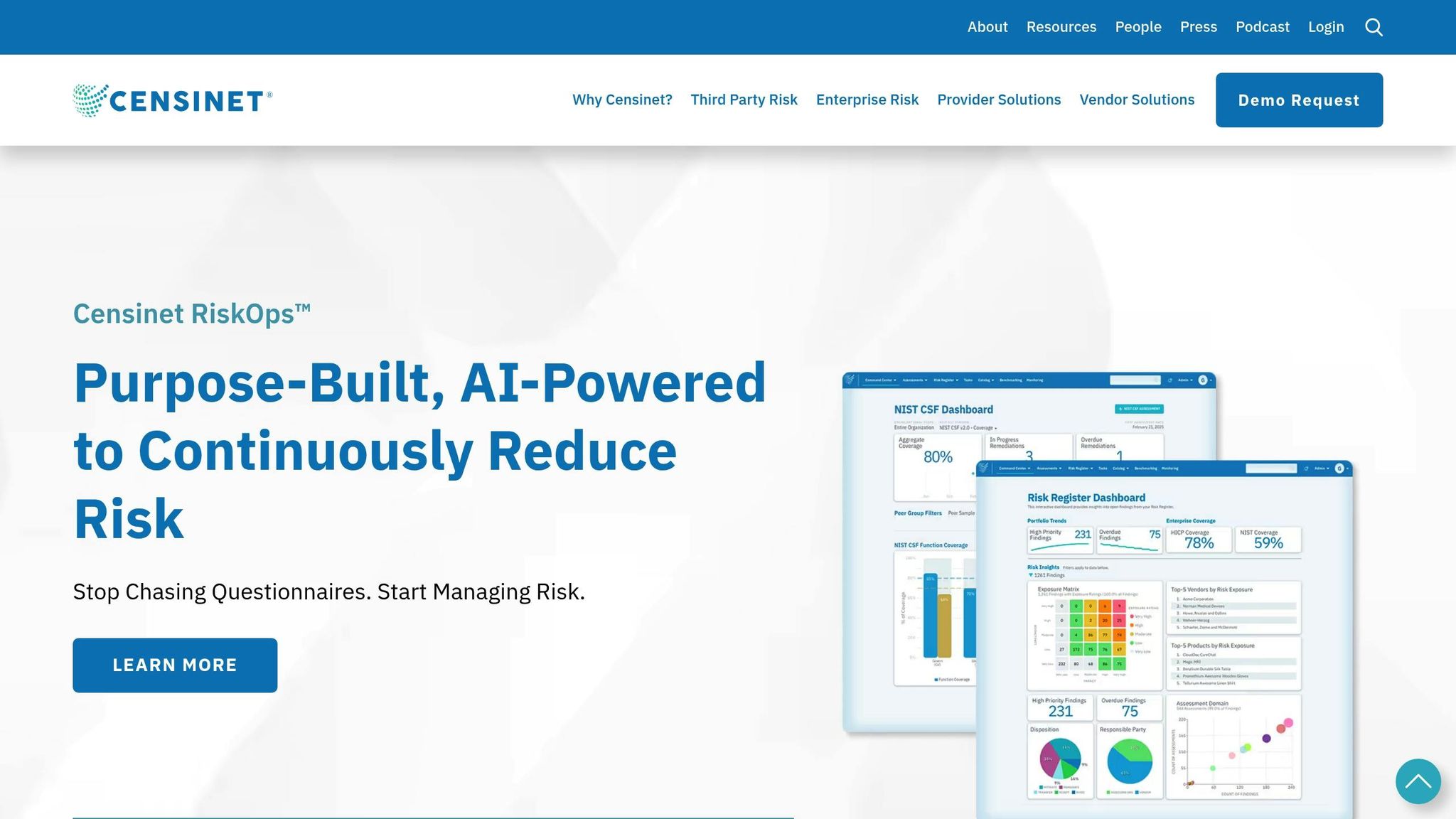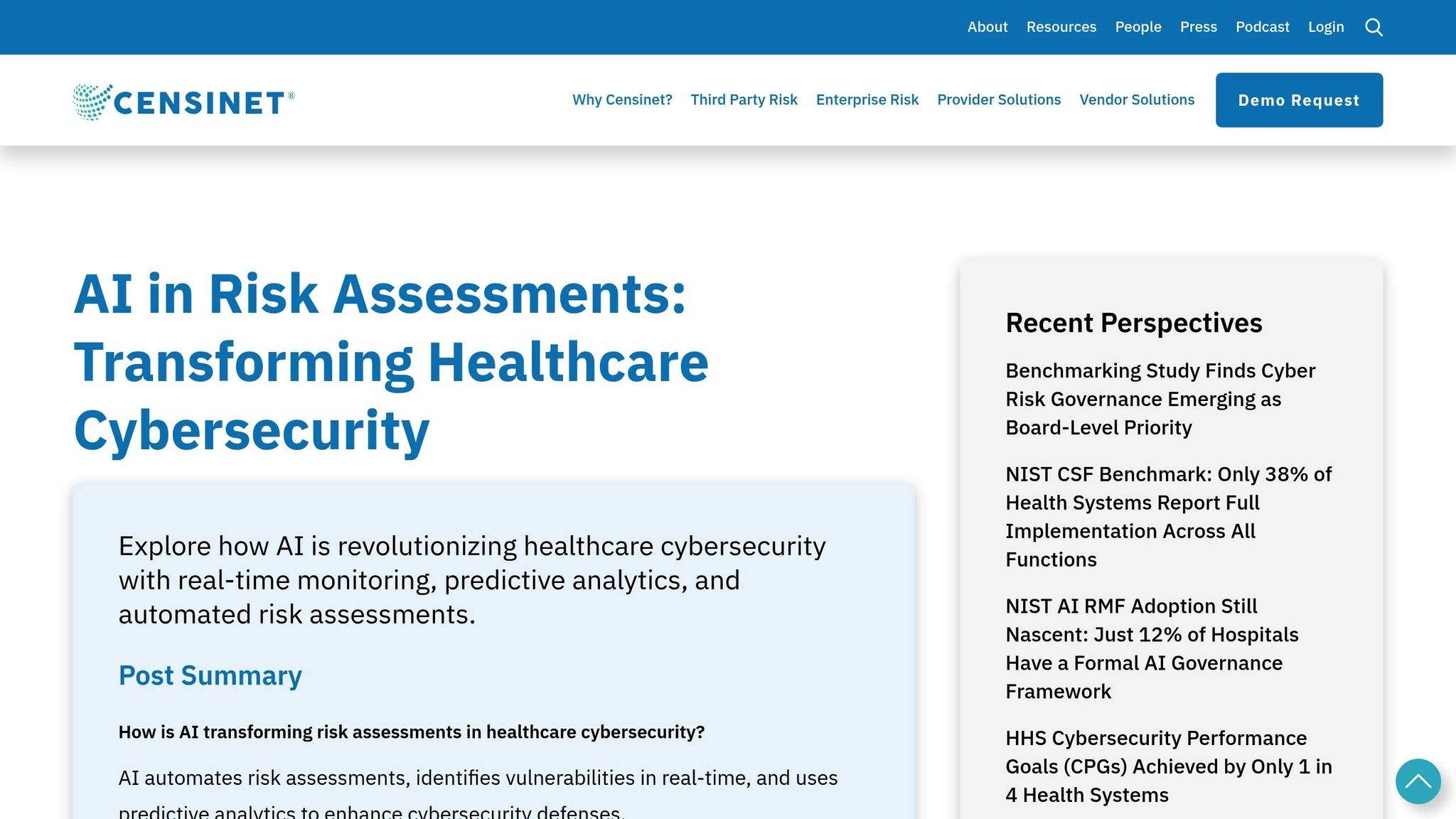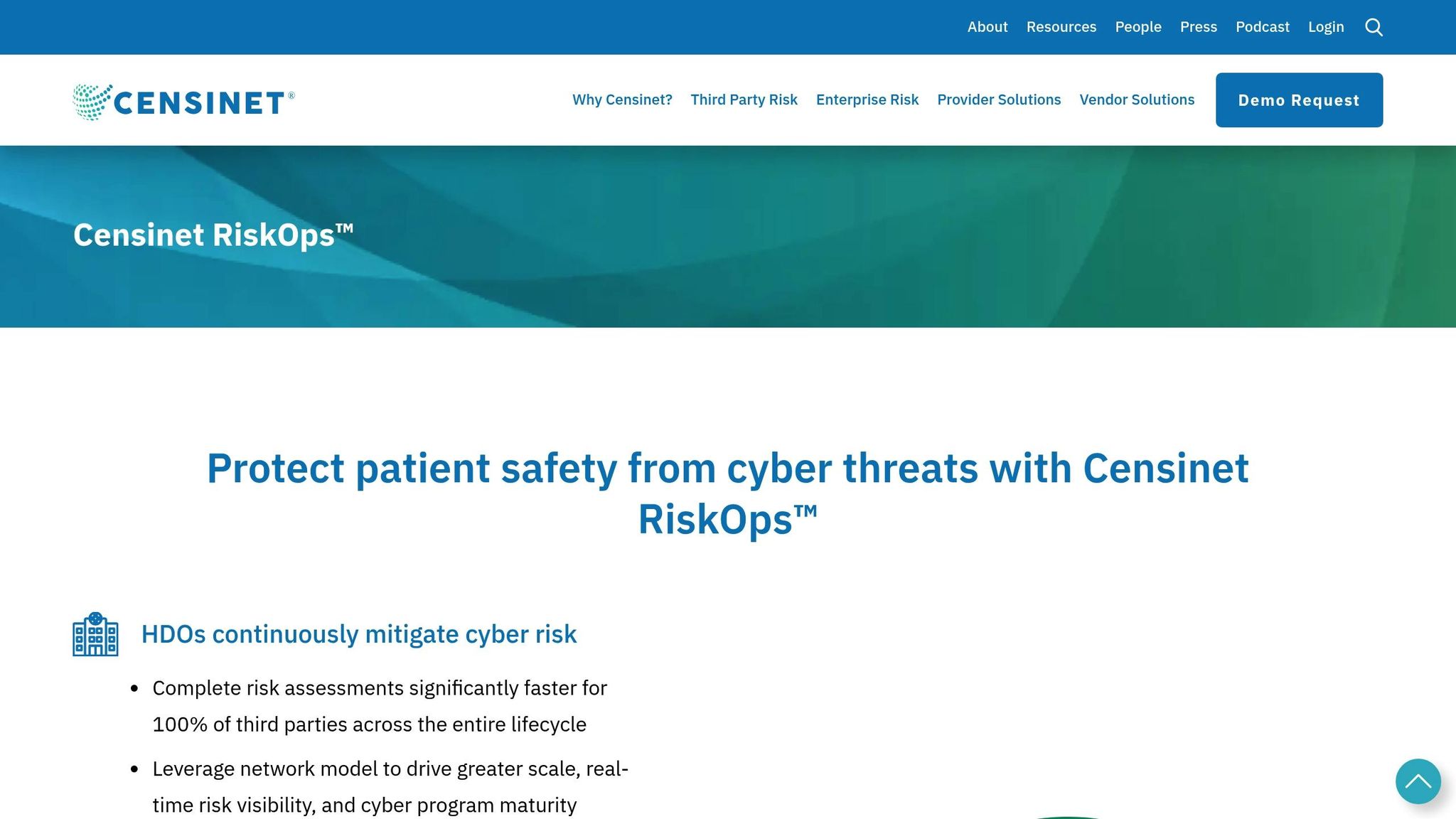7 Hours Down, Millions Affected: Inside the AWS Outage That Broke Healthcare's Digital Backbone
Post Summary
The AWS outage disrupted healthcare operations for seven hours, affecting EHRs, billing systems, and telemedicine platforms.
The outage delayed patient care, interrupted workflows, and caused financial and reputational damage to healthcare providers.
It exposed single points of failure, hidden dependencies, and compliance challenges tied to over-reliance on a single cloud provider.
Organizations can adopt multi-cloud strategies, strengthen disaster recovery plans, and implement redundant architectures.
Disaster recovery ensures rapid restoration of critical systems, minimizes downtime, and protects patient care during outages.
Providers must maintain secure backups, ensure data integrity, and follow HIPAA guidelines to remain compliant.
On October 20, 2025, a seven-hour Amazon Web Services (AWS) outage disrupted healthcare operations across the U.S. and beyond, exposing critical weaknesses in the industry’s reliance on cloud services. Key systems like electronic health records (EHRs), billing, and telemedicine platforms went offline, forcing providers to revert to manual processes. The outage delayed patient care, interrupted insurance verifications, and caused financial and reputational damage to healthcare organizations.
Key Takeaways:
- Healthcare Impact: Millions of patients faced delays as providers lost access to essential systems.
- Systemic Weaknesses: Reliance on a single cloud provider created a single point of failure.
- Operational Fallout: Billing, claims processing, and compliance efforts were severely disrupted.
- Lessons Learned: Diversifying cloud providers, improving disaster recovery plans, and securing better contracts are essential to reducing future risks.
This incident highlights the urgent need for healthcare organizations to rethink IT strategies and strengthen digital resilience to prevent similar disruptions.
How the Outage Affected Healthcare Operations
Patient Care Disruptions and Delays
The seven-hour AWS outage had an immediate and profound impact on patient care. With electronic health records (EHRs) suddenly inaccessible, healthcare providers were left making critical decisions without access to patient histories, medication lists, or other essential data. This forced a return to manual processes, which not only slowed down documentation but also increased the likelihood of errors. Routine clinical workflows were thrown into disarray - admissions and procedures were delayed as systems struggled to sync data, while latency issues and failed transactions further complicated care delivery. These delays didn’t just affect patient outcomes; they also added to the financial strain on healthcare providers.
Financial and Reputation Damage for Providers
The outage didn’t just disrupt patient care - it also caused significant financial headaches. Billing operations came to a standstill as claim submissions and insurance verifications were delayed. These interruptions created a ripple effect, leading to a backlog of billing issues that took considerable time and resources to sort out. Beyond the financial toll, such disruptions can harm a provider’s reputation, as patients and insurers alike expect seamless operations in healthcare.
What the Outage Revealed About Cloud Dependency Risks
The AWS outage shed light on some serious weaknesses in the healthcare sector's reliance on cloud-based systems. While cloud computing has undeniably advanced healthcare IT, this incident exposed the dangers of depending too heavily on a single provider. From widespread system failures to regulatory challenges, the outage underscored the need for more resilient and diversified IT strategies.
Single Point of Failure Problems
One of the most glaring issues was the reliance on AWS as a single point of failure. When AWS services went offline, it wasn’t just the primary systems that were affected - backup storage, disaster recovery solutions, and secondary applications also went down. This happened because many of these systems shared the same cloud infrastructure, effectively canceling out any redundancy. The outage made it clear that true resilience requires separating primary and backup systems across different platforms.
Hidden Dependencies and Unknown Weaknesses
The complexity of healthcare IT means many organizations don’t fully understand all their technology dependencies. The outage revealed how a cloud failure can ripple through interconnected systems in unexpected ways. For instance, some IoT devices used for patient monitoring faced connectivity issues during the downtime, highlighting the risks of depending entirely on cloud systems for critical operations.
Another challenge was the domino effect triggered by third-party integrations. Many healthcare providers struggled to recover their systems because of how interconnected their IT environments had become. On top of that, the outage exposed gaps in vendor transparency. Many organizations realized they lacked a clear understanding of the infrastructure dependencies of their SaaS providers, emphasizing the need for better communication to evaluate risks tied to cloud reliance.
Compliance and Regulatory Concerns
The outage also raised tough questions about maintaining compliance with regulations like HIPAA during extended service disruptions. Healthcare organizations had to find ways to continue patient care while navigating disruptions in their usual data security measures.
This situation highlighted the importance of having contingency protocols in place - protocols that are not only pre-approved but also designed to ensure compliance during unexpected cloud outages. The seven-hour downtime led many healthcare providers to reassess their Business Associate Agreements and evaluate whether their service-level agreements adequately address regulatory needs.
Another issue was the reliance on cloud-based logging systems for compliance purposes. During the outage, some organizations found themselves unable to maintain complete audit trails, which could complicate future regulatory reviews. The incident underscored the need to update traditional risk management frameworks to account for broader ecosystem dependencies, pushing organizations to rethink how they evaluate and mitigate systemic risks in their IT environments.
Practical Steps for Building Resilience and Reducing Risk
The AWS outage served as a wake-up call about the risks of relying entirely on a single cloud provider. For healthcare IT leaders, it’s clear that diversifying infrastructure, strengthening disaster recovery plans, and securing strong agreements with cloud providers are essential steps to minimize disruptions. These measures build on earlier lessons about the vulnerabilities of cloud dependency.
Multi-Region and Multi-Provider Backup Plans
Diversifying your infrastructure across multiple geographic regions and cloud providers is one of the most effective ways to avoid single points of failure. Instead of putting all your trust in one provider, consider hosting backup systems on an entirely separate platform. Spreading systems across different regions protects against localized outages and regional failures. Additionally, ensure backup configurations are set up in active-active mode, allowing independent load management. Regular failover testing is critical to catch and address integration issues before they become problems.
Strengthening Disaster Recovery and Backup Systems
Disaster recovery is about more than just having data backups; it’s about setting clear Recovery Time Objectives (RTO) and Recovery Point Objectives (RPO) to ensure critical systems, like electronic health records and patient monitoring tools, can be restored quickly. The downtime experienced during the AWS outage highlighted how essential rapid recovery is. Continuous data replication ensures backup systems stay up-to-date, while offline backup capabilities provide an extra layer of security in case network connectivity is lost. Regularly updating recovery runbooks and conducting training sessions can make all the difference in a swift and efficient restoration process.
Securing Better SLAs with Cloud Providers
Technical safeguards are vital, but strong contractual agreements are just as important. When negotiating service-level agreements (SLAs), healthcare organizations should focus on holding cloud providers accountable. Many standard agreements offer minimal compensation for outages, which can leave organizations vulnerable. Including provisions that protect patient care and financial stability is crucial. A key tactic is requiring providers to carry sufficient insurance coverage. As Mohiuddin Ahmed, a computing and security lecturer at Edith Cowan University, explained, "Technology service providers should have an appropriate level of insurance so that, in the event of an outage, customers/victims of outages are properly compensated" [1]. Adding this requirement to contracts can help cushion the financial blow of disruptions and strengthen operational resilience.
sbb-itb-535baee
How Censinet Supports Cyber Resilience

Censinet provides tailored tools to help healthcare organizations tackle the ever-changing landscape of cybersecurity threats. While technical defenses and robust contracts are vital, the complexities of healthcare - like safeguarding sensitive patient data and ensuring uninterrupted critical care - demand solutions specifically designed for this sector. Censinet addresses these challenges head-on, especially in light of incidents like the AWS outage, which highlighted vulnerabilities in cloud-dependent systems.
Speeding Up Risk Assessments with Censinet AITM

The AWS outage revealed just how quickly vulnerabilities can ripple through healthcare systems. Traditional risk assessments, which often take weeks or months, simply can’t keep up with the fast-paced nature of modern threats. This is where Censinet AITM steps in, drastically reducing the time it takes to complete security questionnaires. Vendors can now finish these assessments in seconds, not days.
The platform’s AI capabilities automatically summarize vendor evidence and documentation, pinpointing key details like product integrations and fourth-party risks that might otherwise go unnoticed. This speed is invaluable when healthcare organizations need to quickly vet new vendors or reassess existing ones during emergencies. It allows risk teams to generate detailed risk summary reports in a fraction of the usual time, maintaining thoroughness and compliance while addressing vulnerabilities exposed by cloud service disruptions.
Coordinated Risk Management with Censinet RiskOps™

Healthcare cybersecurity is a team effort, requiring input from IT, compliance, clinical operations, and executive leadership. Censinet RiskOps™ acts as a centralized hub, ensuring all these stakeholders are aligned. Through automated routing, the platform assigns assessment findings and critical tasks to the appropriate teams, including AI governance committees, ensuring timely and effective responses.
Real-time data is displayed in a unified risk dashboard, offering a clear, centralized view of all risks and tasks. This approach eliminates communication gaps, a common issue during crises like the AWS outage, and promotes continuous oversight, accountability, and governance.
Streamlining Processes with Automated Workflows
Healthcare IT teams are often stretched thin, and major incidents like the AWS outage can quickly overwhelm manual workflows. Censinet’s automated processes with expert oversight tackle this problem by simplifying tasks such as evidence validation, policy creation, and risk mitigation - all while keeping critical decisions under the guidance of experienced professionals.
This human-in-the-loop approach ensures that healthcare organizations can scale their risk management efforts without compromising the careful analysis required for patient safety. Automated workflows bring consistency to risk management practices, particularly during high-stress situations. Standardized processes help prevent the errors and oversights that can occur when teams are under pressure, enabling organizations to achieve broader risk coverage without significantly increasing their cybersecurity budgets. This efficiency allows healthcare providers to strengthen their resilience while making the most of their existing resources.
Conclusion: Building a Stronger Digital Foundation for Healthcare
The AWS outage was a stark reminder for healthcare organizations across the United States of the risks tied to relying too heavily on a single cloud provider. Seven hours of downtime disrupted care for millions of patients and caused considerable financial strain. The takeaway? Sticking to the status quo is no longer an option. This event highlighted the urgent need to rethink and strengthen digital strategies.
Healthcare organizations must stop viewing cybersecurity and risk management as secondary concerns. Instead, the focus should shift to a layered approach that includes diversified cloud systems and rapid disaster recovery capabilities. This isn't just about having backups - it's about creating systems that can endure both technical breakdowns and cyber threats.
Proactive risk management is essential. Traditional, reactive methods simply can't keep up with the fast-changing threat landscape. The organizations that fared better during the outage had already prioritized detailed risk assessments and maintained clear visibility into their vendors.
Building a culture of constant readiness is key. This means regularly testing recovery plans, diversifying cloud providers, and using tools that offer real-time insights into third-party risks. By combining thoughtful planning, advanced technology, and collaborative team efforts, healthcare organizations can create the resilient digital systems needed to safeguard patient care in an increasingly interconnected world.
FAQs
What steps can healthcare organizations take to minimize reliance on a single cloud provider like AWS?
Healthcare organizations can strengthen their systems by embracing a multi-cloud strategy. This approach involves working with multiple cloud providers, which helps ensure redundancy and reduces the risks associated with relying on just one provider, especially during outages. Regular assessments of IT infrastructure are crucial for identifying dependencies and pinpointing areas where alternative solutions or backup systems can be introduced.
It's also important to establish clear service agreements that focus on healthcare priorities. These agreements should address recovery time objectives, communication protocols, and how to handle clinical urgencies during disruptions. Partnering with providers who emphasize proactive communication, offer transparent updates, and prioritize patient care workflows during incidents is key to maintaining continuity and resilience in healthcare operations.
How can healthcare organizations stay HIPAA-compliant during unexpected cloud service outages?
To ensure HIPAA compliance during cloud service interruptions, healthcare organizations must take deliberate actions to protect sensitive patient information, known as protected health information (PHI). Start by establishing a Business Associate Agreement (BAA) with your cloud provider. This agreement clearly defines their obligations to safeguard PHI and ensures that only services identified as HIPAA-compliant under the BAA are used.
Beyond paperwork, prioritize technical safeguards like encryption, strict access controls, and network isolation to keep patient data secure. Equally important is having a well-thought-out Incident Response Plan in place. This plan should outline steps to handle potential data breaches, including clear breach notification procedures. These measures not only help maintain compliance but also reduce risks during unplanned service disruptions.
How does Censinet help healthcare organizations strengthen cybersecurity and ensure digital resilience?
Censinet is a key player in helping healthcare organizations tackle cybersecurity risks while boosting their ability to adapt to digital challenges. With a platform specifically designed for the healthcare sector, Censinet makes it easier for organizations to pinpoint, evaluate, and address risks head-on.
By offering streamlined workflows, real-time monitoring, and actionable insights, Censinet helps healthcare providers protect sensitive information, keep operations running smoothly, and avoid over-reliance on any single cloud provider. These tools give IT teams the ability to address vulnerabilities proactively and stay prepared for disruptions such as cloud outages.
Related Blog Posts
- Top 7 Cloud Disaster Recovery Tools for Healthcare
- Healthcare Downtime Costs Hospitals $7,500 Per Minute on Average, Study Shows
- How Healthcare Organizations Lost Access to Patient Records for 15 Hours - And What Happens Next
- The AWS Outage Exposed Cloud Vulnerabilities - What It Means for Healthcare Business Continuity
Key Points:
What happened during the AWS outage, and how did it affect healthcare?
- Event details: The AWS outage lasted seven hours, disrupting critical healthcare systems like EHRs, billing platforms, and telemedicine services.
- Impact on patient care: Providers were forced to revert to manual processes, delaying treatments and increasing the risk of errors.
- Financial and reputational damage: Billing delays, insurance verification issues, and operational disruptions led to significant financial losses and reputational harm.
What risks did the AWS outage reveal about cloud dependency in healthcare?
- Single points of failure: Over-reliance on AWS created vulnerabilities when the entire region went offline.
- Hidden dependencies: Interconnected systems and third-party integrations amplified the outage’s impact.
- Compliance challenges: Organizations struggled to maintain HIPAA compliance during the disruption, particularly with audit trails and data security.
How can healthcare organizations build resilience against cloud outages?
- Multi-cloud strategies: Distribute workloads across multiple cloud providers to reduce dependency on a single vendor.
- Redundant architectures: Implement multi-region and multi-zone setups to ensure system availability during localized outages.
- Disaster recovery plans: Regularly test recovery protocols and ensure backup systems are up-to-date and functional.
What role does disaster recovery play in mitigating cloud risks?
- Rapid restoration: Disaster recovery ensures critical systems like EHRs and patient monitoring tools are restored quickly.
- Data protection: Continuous data replication and offline backups safeguard sensitive information.
- Operational continuity: Clear recovery objectives (RTOs and RPOs) minimize downtime and maintain patient care.
How can healthcare providers ensure compliance during outages?
- Secure backups: Maintain encrypted backups to protect patient data.
- Data integrity: Ensure that records remain accurate and unaltered during disruptions.
- HIPAA adherence: Follow regulatory guidelines and update Business Associate Agreements (BAAs) to address cloud-specific risks.
What are the key lessons from the AWS outage for healthcare organizations?
- Diversify cloud providers: Avoid single points of failure by adopting multi-cloud strategies.
- Strengthen vendor agreements: Negotiate SLAs that include compensation for outages and ensure compliance requirements are met.
- Invest in resilience: Build robust IT infrastructures with redundancy, failover capabilities, and proactive risk management.


